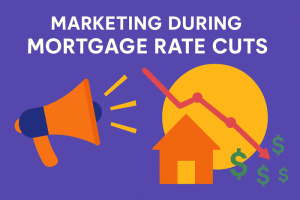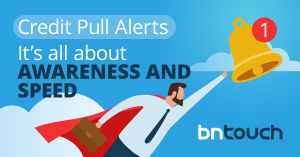Summary
This article discusses how to craft impactful calls-to-action (CTAs) for mortgage marketing. Learn techniques to drive engagement, capture more leads, and improve conversion rates. Well-designed CTAs are key to motivating potential clients to take desired actions. By the end, you’ll have the tools to create CTAs that effectively support your marketing goals.
Content marketing brings you lots of organic web traffic and social media engagement, the question then becomes how to convert those visitors and that engagement into conversions? The easiest way to do this is to put high converting calls to action in your informational content.
What Is A Call To Action?
A call to action (CTA) is a banner, link, form or button that asks a visitor to perform the desired action on your website, blog article, landing page, email, or anywhere else you can squeeze them in online. For instance, if you write a blog post about a new loan program that your brokerage is promoting, you could create a button for the reader to fill out a form and pre-qualify for the type of loan that is being discussed in your article. The purpose of the CTA is to send the user further down your conversion funnel.
Calls to action in traditional advertising are pretty basic. You target your ad to your ideal buyer persona. They see the ad, click on the button, and are driven to a landing page that was optimized for that persona. You can check out our full article on creating buyer personas for your mortgage content here. What about your CTA’s for your content marketing though? They are a bit more tricky.
With your informational-based content marketing pieces, how you ask in your CTA is very important. If your approach is too heavy-handed, it may come off as a sales pitch to your reader, turn them off and cause them to look for a different mortgage broker. When you create CTA’s for your informational content marketing pieces, keep in mind the following considerations:
- If your CTA is in content (in the middle of your blog article, for instance), it shouldn’t be too intrusive and keep your reader from easily digesting the article.
- Your in-content CTA’s need to be relevant to the actual article your reader is reading (again, think about our loan program example we gave a minute ago).
- You have to make sure your CTA looks like a CTA. In other words, you don’t want your reader to skip over it. You want it to catch their eye and clearly tell them what you’d like them to do.
In-Content CTA Examples
There are two main types of in-content calls to action that you should consider placing inside your mortgage content.
Lead Generation CTA’s
Lead generation calls to action are probably the ones you are most familiar with. If you’ve ever seen a click to subscribe or click to download CTA, these are classic examples for lead generation CTA’s. Generally, these CTA’s would fall either mid-way through your mortgage article, or at the end of your article. Depending upon how your brokerage’s blog is set up on your website, you might also have a CTA on the right sidebar of your blog. A good lead generation CTA has a headline that serves as a hook, a succinct description of what the reader gets by giving you their information, and a button with a clear call to action.
For instance, if you have written a blog article about loan programs for nurses, a sample of a good lead generation CTA might be:
Headline: Nurses Can Buy Their Own Homes
Copy: There are many loan programs out there that can make purchasing a home a reality. I’ve prepared a report that details the different types of loan programs, features, and benefits so you can pick the loan program that is best for you.
CTA Button: Download My FREE Cheat Sheet Now!
Lead generation calls to action are some of the most effective ways you can engage a website visitor that is reading your content. The truth is that many people that come to your mortgage website aren’t ready to become your customers at that exact moment. The lead generation CTA gives you the ability to at least let them raise their hand to let you know that they have some sort of interest in what you are offering, allowing you to follow up with them and convert them later when the time is right.
The trick to getting people to fill out a lead generation CTA is offering something that is deemed highly valuable by your ideal prospects that they are going to want to get. This is what is referred to as a lead magnet. Remember, the lead magnet needs to compliment whatever topic your article is about.
Taking the same example above, if you are writing an article about a niche topic such as loan programs for Nurses, what might the reader deem valuable? In this case, a downloadable PDF summary of the different loan programs that are available and additional content that wasn’t available in the article, such as the pros and cons of each loan program are all things that the reader would deem valuable.
Sales Generation CTA’s
This is probably the most often used call-to-action mortgage brokers use on their websites. This call to action is aimed at promoting your readers to purchase. These CTA’s discuss your product’s key selling points, invite the reader to take advantage of a special discount, or show other products the reader might be interested in taking advantage of.
The 1003 form is a very commonly used CTA in mortgage content. Readers can click this CTA and start applying for their loan with this form. You might have a special landing page that you’ve built to capture this information, or you may have an automated way to generate this form, gather the user data, and have it automatically import into your CRM system.
Building An Effective CTA
So now that we know what calls to action are, and also have a good idea of what a couple of the most common types of calls to action are, let’s discuss how to build effective CTA’s.
Audit Your Mortgage Website’s Existing CTA’s
This may seem like an obvious place to start, but you won’t believe how many mortgage brokers we come across that simply dive in and start creating CTA’s. The truth is though until you examine your current CTA’s, analyze the stats on each CTA to see what works well and what doesn’t, you don’t have a proper baseline to begin your optimization process of building high converting CTA’s.
Clicktool makes a great (and free) tool that you can use to analyze your CTA’s and the path that people are taking with them. You can generate the reports you need to make educated decisions on how to produce higher converting CTA’s and also track their performance as you launch them.
Once you have set up your CTA tracking, go ahead and start diversifying and improving your in-content call-to-action tactics.
Fully Integrated And Contextually Relevant
Next, you want to make sure that whatever CTA’s you put into your content is not only compelling and pertinent to your mortgage company’s buyer personas, but also contextually relevant to the context of your content piece. For instance, if your blog article is about steps first-time homebuyers should follow to get a pre-qualification, a CTA about how to refinance your home loan would not make much sense for the reader. That wouldn’t apply to them, so they are very unlikely to click on it and give you their information.
Remember, things have to tie in with one another to give the reader a good overall experience. The more to the reader that your CTA will solve the problem presented in your piece of content, the stronger the conversion rates will be for that CTA.
Personalize your CTA’s
Personalization is becoming the new norm. Personalized video and personalized content, for instance, is becoming a standard that online users are coming to expect as part of the overall user experience. Personalization can also be carried out with your calls to action.
For instance, having your CTA dynamically fill in something such as calling out the city the reader is located (e.g. Looking to buy your first home in Rancho Santa Fe? Download our first time home buyer pre-qualification checklist) in will make your call to action that much more compelling to them.
Making personalized CTA’s and putting them in your content is the most efficient way to increase your conversion and ROI (Return on investment) for your mortgage content. Hubspot has reported that personalized calls to action can perform over 200% better than static CTA’s.
Convert Flow is a great personalization marketing tool that allows you to personalize your calls to action (and many other facets of your mortgage website) without having to know how to code. This gives you the ability to know your reader’s intent and interests and serve them a highly personalized user experience that is going to promote conversion, in real-time.
Optimized CTA’s Are Critical To Growing Your Mortgage Business
Good content is, of course, important to establishing your brokerage as the thought leader in the mortgage industry. Even the best content though is useless unless you work on a strategy to bring the reader into your pipeline and move them through the buyer journey. Optimized calls to action, placed strategically inside your great content that uses these steps we’ve described today to gear them towards conversion will help you take your content and power it up to be one of your most valuable sales tools.
Key Takeaways
- Drive Engagement
Effective CTAs motivate potential clients to take immediate action.
- Increase Conversion Rates
Well-placed CTAs help turn website visitors into leads and customers.
- Support Marketing Goals
CTAs align with your campaigns to achieve specific objectives.
Commonly Asked Questions
- What is the purpose of a strong CTA?
A compelling CTA drives immediate client actions, like form submissions or scheduling consultations.
- How do CTAs increase conversions?
By guiding users toward specific steps aligned with campaign goals, boosting results.
- Why are CTAs important for marketing campaigns?
They create clear pathways for users to engage and take meaningful action.
- What elements make a CTA effective?
Concise language, urgency, and a valuable incentive create an impactful CTA.





